#riparian
Text
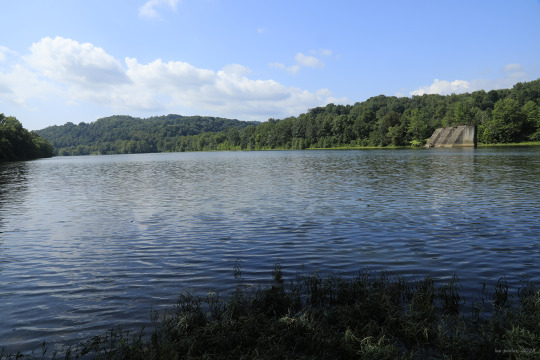
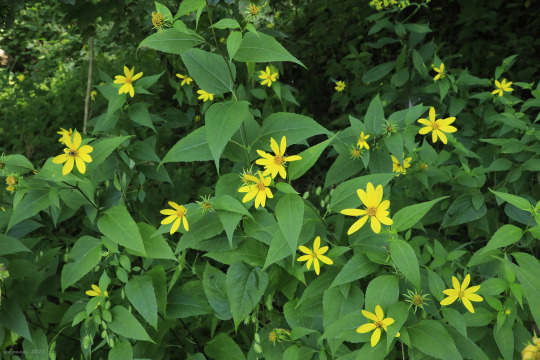

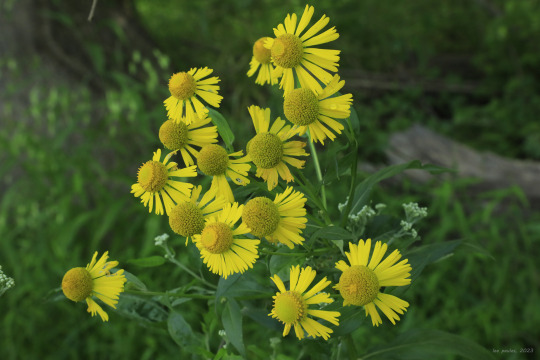
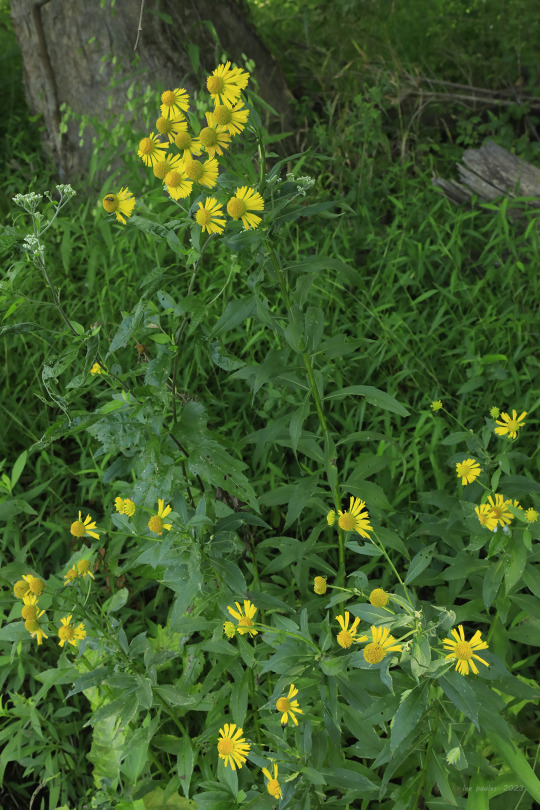

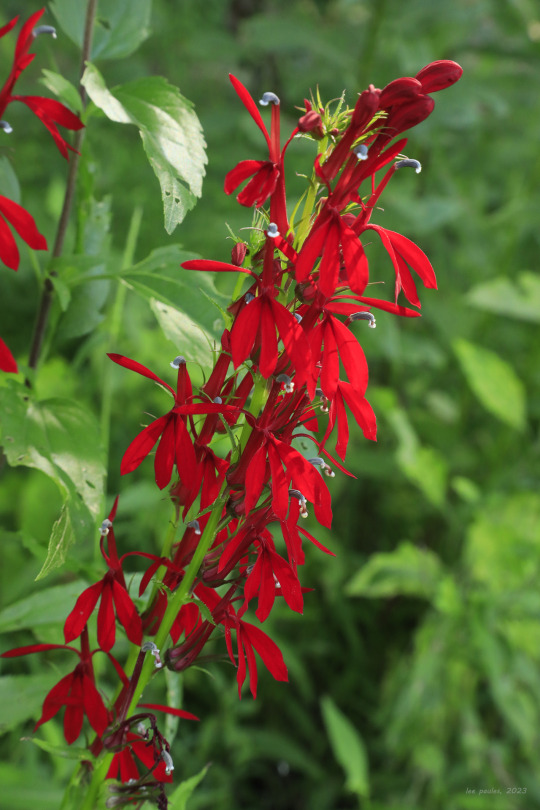

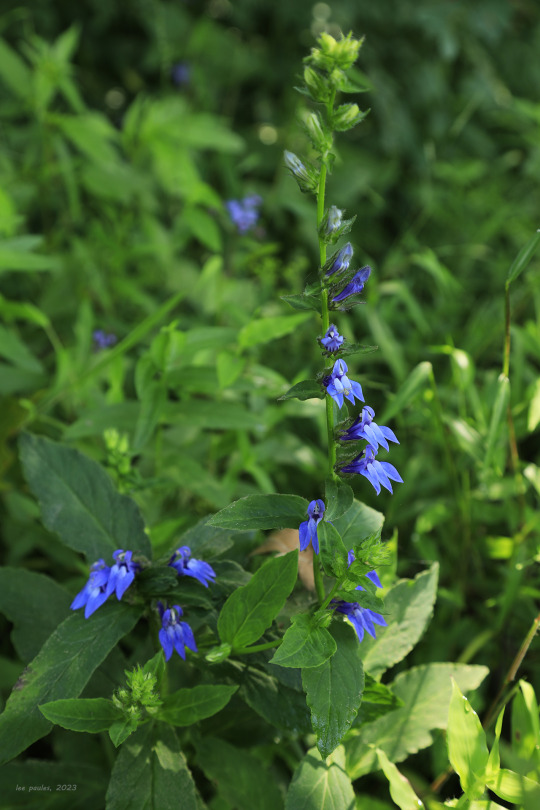

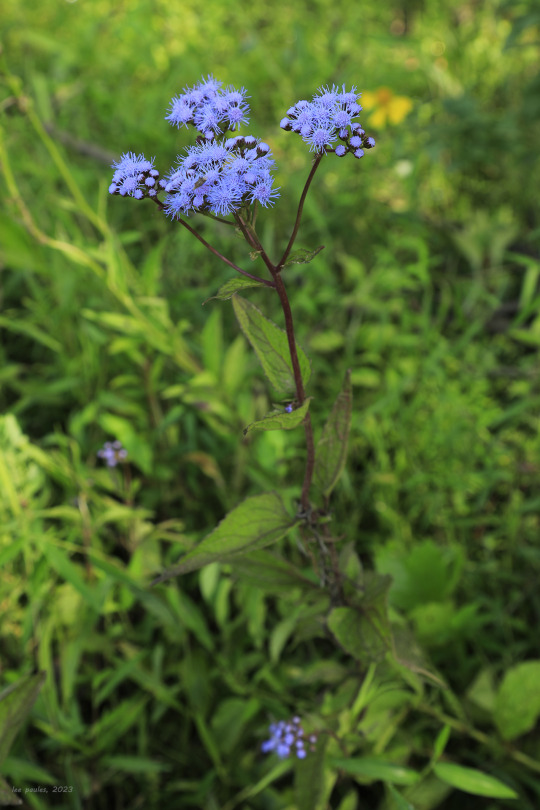
A selection of late summer wildflowers growing in the riparian zone along the Monongahela River at the Friendship Hill National Historic Site.
From top: Paleleaf woodland sunflower (Helianthus strumosus), also known as pale-leaved sunflower, distinguished by long leaf petioles and a pale leaf underside; common sneezeweed (Helenium autumnale), a water-loving aster whose dried leaves were once used to make snuff; cardinal flower (Lobelia cardinalis), whose scarlet, five-lobed flowers draw hummingbirds as pollinators; the closely-related great blue lobelia (Lobelia siphilitica), which early settlers once used as a treatment for syphilis (wishful thinking); and blue mistflower (Conoclinium coelestinum), or wild ageratum, a native aster that has become popular as a garden plant.

As a note, about a dozen sunflowers call NC-WV - SW PA home and they readily hybridize, often complicating identification. Pale-leaved sunflower has a tall, branching structure up to 7 feet in height and dense clusters of large flowers. In addition to long petioles and a pale leaf underside, this sunflower has a smooth stem with a whitish bloom to it. It's a very beautiful mid-to-late summer aster and one of my favorite wildflowers of Central Appalachia.
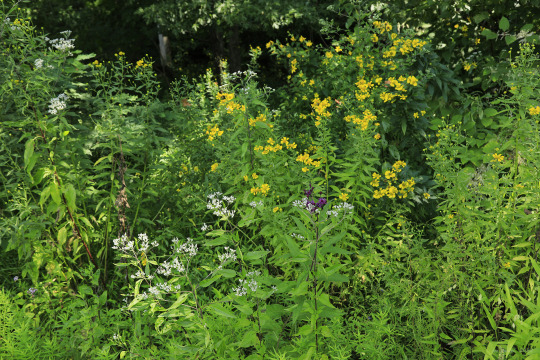
#appalachia#vandalia#wildflowers#flora#summer#pennsylvania#monongahela river#friendship hill national historic site#pale-leaved sunflower#paleleaf woodland sunflower#paleleaf sunflower#common sneezeweed#cardinal flower#great blue lobelia#blue mistflower#mistflower#wild argeratum#riparian
131 notes
·
View notes
Text
"At least 239 barriers, including dams and weirs, were removed across 17 countries in Europe in 2021, in a record-breaking year for dam removals across the continent.
Spain led the way, with 108 structures taken out of the country’s rivers. “Our efforts to expand dam removals across Europe are gathering speed,” said Pao Fernández Garrido, project manager for the World Fish Migration Foundation, who helped produce Dam Removal Europe’s annual report.
“An increasing number of governments, NGOs, companies and communities are understanding the importance of halting and reversing nature loss, and buying into the fact that dam removal is a river-restoration tool that boosts biodiversity and enhances climate resilience. We’re also seeing lessons being learned from previous dam removals, new countries kickstarting removals, and new funds, including crowdfunding.”
More than 1m barriers are estimated to exist on Europe’s rivers, with many built more than a century ago. At least 150,000 are old, obsolete barriers that serve no economic purpose.
Dams, weirs and other river obstacles block fish migration routes, often leading to the loss of breeding areas and reduced numbers of species such as salmon, sturgeon, trout and eel, which affects the wider biodiversity of ecosystems, including species ranging from eagles to otters. Free-flowing rivers also transport sediments and nutrients.

Pictured: Before-and-after shots of a dam removal on a river in Parc naturel régional du Haut-Jura, France, in 2021.
“Removing dams is a real need,” said Fernández Garrido. “We have hundreds of thousands of abandoned barriers, which is a safety problem. Dams affect water quality and underground water levels, cause channel and coastal erosion and beach disappearances, generate greenhouse gas emissions and lead to declines and even extinctions of migratory fish populations, with a 93% decline of migratory fish in Europe in the last 50 years. Dams have a negative impact on the environment, so if a dam or weir isn’t strictly necessary any more, we mustn’t pass the burden to future generations.”
Dam Removal Europe is a coalition of seven organisations, including the World Fish Migration Foundation, WWF, the Rivers Trust and Rewilding Europe, working to restore healthy, free-flowing rivers across the continent. The latest report found that 76% of the removals were of small dams and weirs, but 24% were higher than 2 metres. Three countries – Portugal, Montenegro, and Slovakia – recorded their first ever dam removals in 2021. In Finland, a functioning hydropower dam was also dismantled, the first of three on the Hiitolanjoki River, which, when completed, is expected to allow landlocked salmon to return to spawning grounds.

Pictured: The Cantabrian River Basin Authority in Spain removed 50 barriers in 2021. Photograph: CRBA
“This is the perfect example to show that when an operating hydropower dam isn’t needed, and energy can be supplied by other sources, it’s worth removing it and recovering the river,” said Fernández Garrido. “The river will be totally free of dams for the first time in over 120 years.” ...
Fernández Garrido continued, “We really want to see governments from all countries taking action and creating national grants and plans to completely free some of their rivers from obstacles, so there is, at least, a free and healthy river per country. We’re talking about creating a big shift.”"
-via The Guardian (US), 5/15/22
#spain#europe#dam removal#rivers#riparian#rewilding#conservation#wilderness restoration#salmon#fish#ecosystem restoration#good news#hope
216 notes
·
View notes
Text


Arundinaria gigantea, Giant River Cane
North America's native bamboo. It used to be that the Southeastern USA had extensive riparian thickets of bamboo known as canebrakes, but Arundinaria is now a rare find. The bottom photo is the edge of a rare fragmentary canebrake on a nearby vacant lot (most likely being used for stormwater drainage) that I want to try preserving.
193 notes
·
View notes
Text
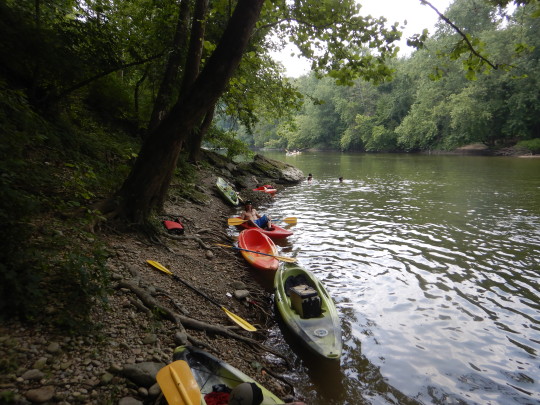

Along the Little Miami Inbetween hamilton and clermont co is a section that maintains conglomerate mudstone layer and a lot of mud banks close enough to mudflats that you still get some classic mudflat species and riparian gravel bar species.

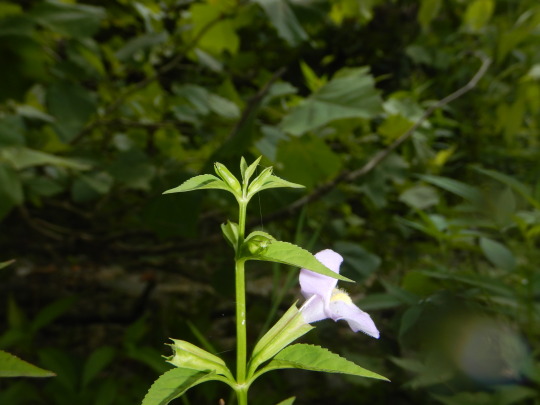
The first is the winged monkey flower(Mimulus alatus) , known for winged squared of stems, though since Ohio gets both, if you need to collect seeds for bioswale forbes and want to differentiate them when the stem is brown, the peduncle, aka main stem that holds/bares a flower or a fruit attached to the stem, is almost sessile or near sessile, aka still there but close to not existing where as Allegheny is elongate.



a gravel bar species requiring full sun is Hibiscus moscheutos or the swamp rose mallow, it's about as common as our other native Hibiscus laevis or the halberd leafed mallow; this species pictured has more common smaller colonies with pink flowers on average with what most assume as a non deeply lobed leaf differing from a halberd lobed white flower with taller plants on average and larger colonies.

Wouldn't be a good gravel bar without falls redest sedum, Ditch stone crop! or is it a sedum really???, while we used to assume based on morphological features it is no longer placed in the genera Sedum and is Penthorum sedoides a non succulent water loving species that actually has found it's self as a member of the saxifrage order. It is one of two species that I know of in the genera, and is associated with it's own family as of now. It is also the only member of the genus within the United States. Side note: As a member or the saxifrage order I don't even know if this species utilizes CAM to be honest and it wouldnt benefit it if you think about it.



Lindernia dubia
false pimpernel
Associated with the mudflats, it's funny because people call this and many others the mudflat ephemerals because they are brief and seasonal inbetween flood stages. These always look like a monkey flower at first glance before you know the species.
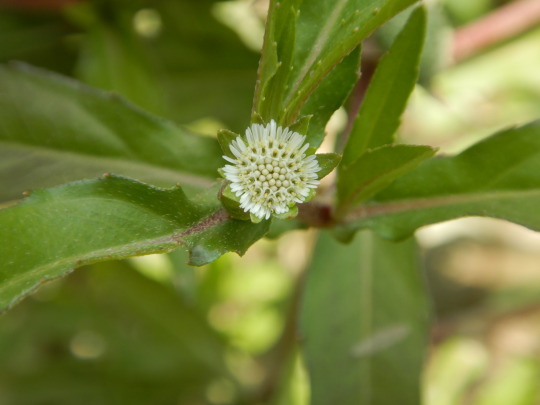
Eclipta prostrata
Mudflat false daisy, a riparian and swale species but also very common on mudflats.
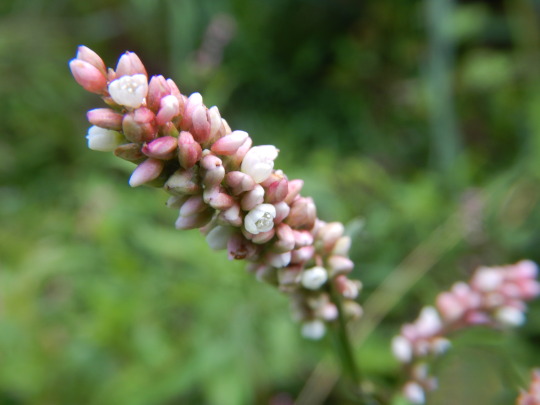
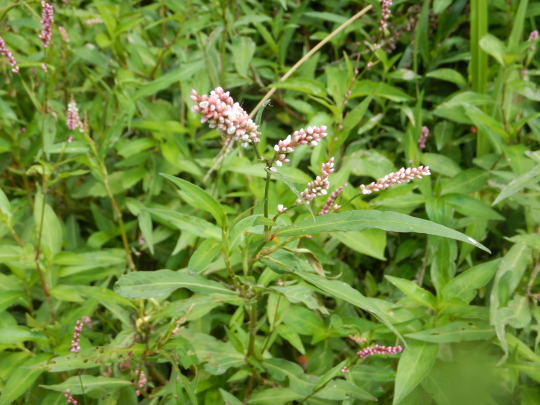


Persicaria pensylvanica or pensylvania smart weed, is a robust flowering species that forms semi erect inflorescence that are peppered pink and white. and easy to differentiate when you look at a non frimbrate connected ocrea that sheathes both stem and petiole. you can see invasive Persicaria longiseta or oriental bristled ladies thumb with frimbrate ocrea in background :( spicy flowers on our natives less spicy on the non natives.
#mimulus#mimulus alatus#ringens#botany#ohio#mudflats#riparian#hibiscus moscheutos#hibiscus laevis#hibiscus#lindernia dubia#lindernia#mudflat#ephemeral#penthorum#penthorum sedoides#eclipta prostrata#Persicaria pensylvanica
22 notes
·
View notes
Text
I made a paludarium. The land area is composed of great stuff foam on an egg crate light diffuser. After curing and carving, I used aquarium safe silicone, and covered it in lava rock/sand. I then added a submersible pump for the water feature, the Driftwood, and planted the plants in a mixture of fluval aquasoil and sphangum moss.
You can see the setup and initial planting on the bottom and the final product after two weeks growth and added moss on top. Hopefully will be stocked with Youkihi Medaka and cherry shrimp!




52 notes
·
View notes
Text
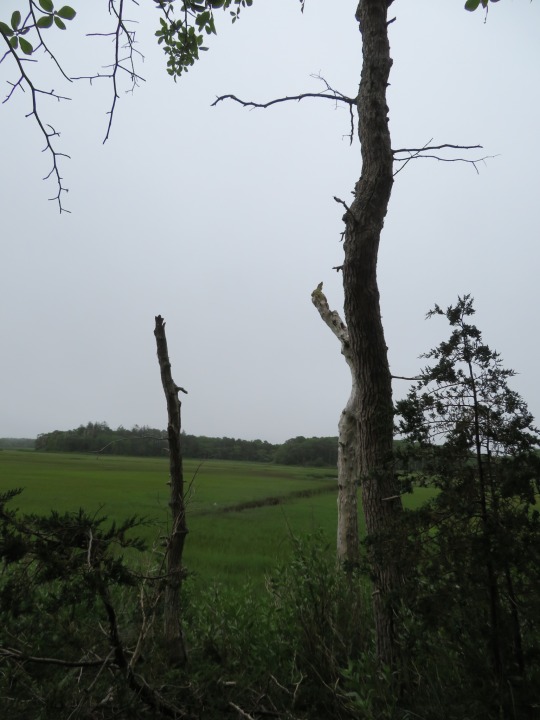

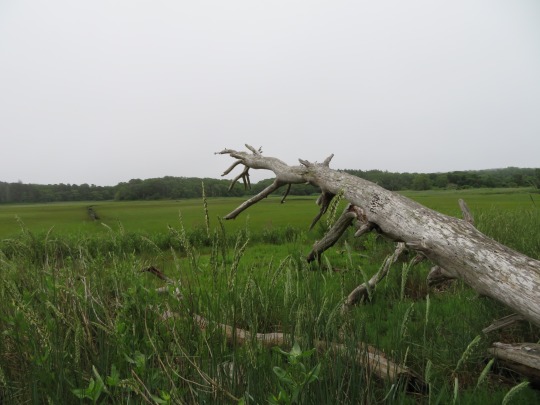

Trail by the saltmarsh
#rb if you love riparian habitats 💚#mother nature#my photography#salt marsh#brackish#estuary#riparian#water#places#nature trail
44 notes
·
View notes
Text




• World Frog Day, 2024 •
✨🍃🪷🐸🪷🍃✨
#worldfrogday#anura#amphibians#frogs#ecosystem#forest#wetland#indigenous flora#riverine#riparian#western cape#nature#nature photography#indicator species#biodiversity#no filter#nature log
8 notes
·
View notes
Text
Planting season
Planting season for (dormant) trees in our area is March 15 through April 15th, more or less. I have several trees in pots, maples and chestnuts, and I am determined to get them planted this year.
I grabbed the first of the maples this morning, but its roots had grown down through the bottom of the pot and into the soil beneath. I was tugging, prying, and cussing myself out for not having done this last spring, when I initially intended to. Then I stopped cold, realizing
that this time last year I was dealing with my father’s end-of-life; I spent ten days at the hospital with him, then had an enormous burden of house-cleaning and clerical work after he passed in late March. So. Yeah. I DIDNT get the tree-planting done. But I will not be beating myself up about that anymore. If I can save the maples I will; if they die they’re just free seedlings that sprouted around the edge of the yard anyway. The chestnuts are much smaller and probably not so rootbound. We’ll see. Deep breath. Self-compassion. Grab a shovel.
Silver maple are comfortable in riverbank areas, so I took one of them down to the creek bottom where I’ve been clearing brush. Maples and walnuts are excellent for suppressing undergrowth; maples because they are so shady and walnuts because they poison other plants growing too near them!
It wasn’t too hard digging a hole in the loose, sandy soil. I planted the maple in a spot where another tree blew over during the winter. If I’m lucky, it will grow swiftly (maples do!) and shade that area at least a little within ten years.
I also dug some shallow trenches close to the water and laid Streamco willow cuttings in them. Five sections of those, and multiple cuttings in each trench - fingers crossed there will be multitudes of willow sprouts poking up in a month or two.
43 notes
·
View notes
Text
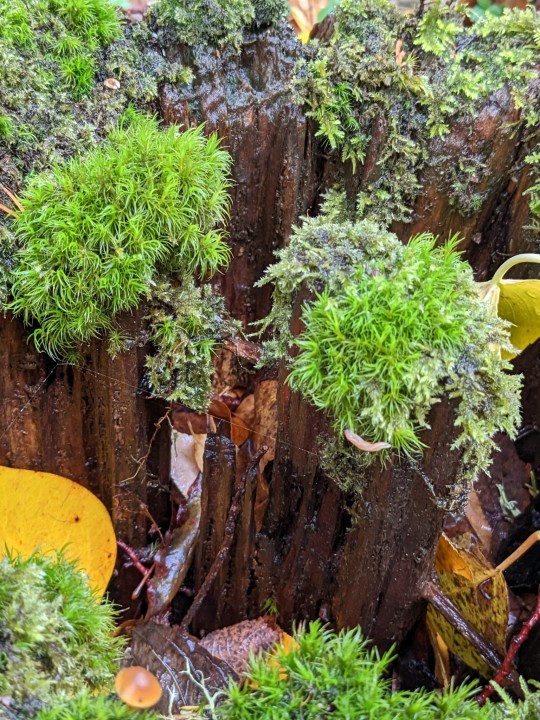

Treehouse Gardens
30 notes
·
View notes
Text
20 notes
·
View notes
Photo
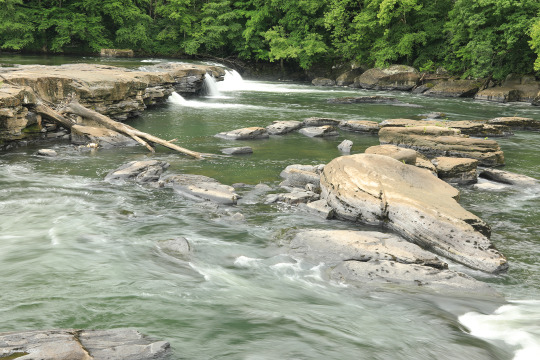
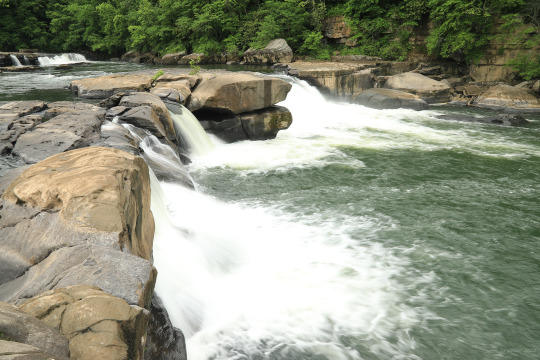

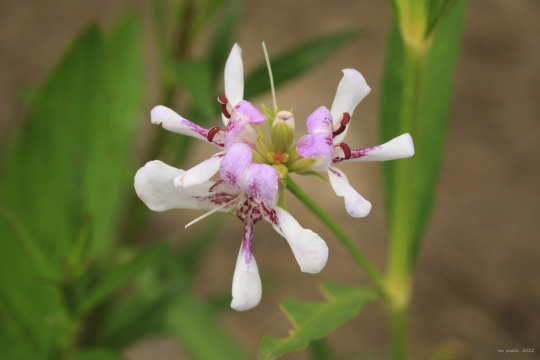
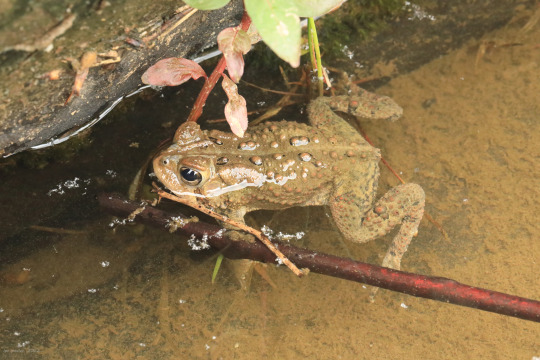
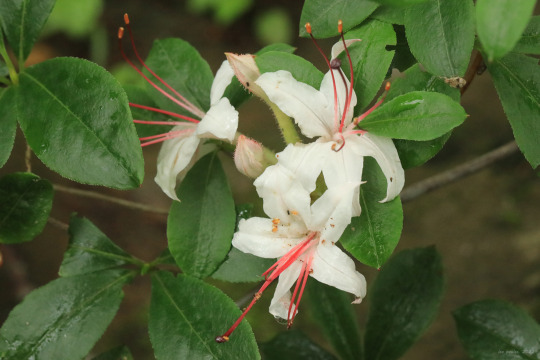

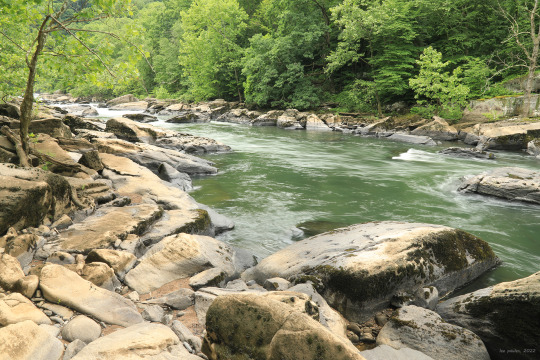

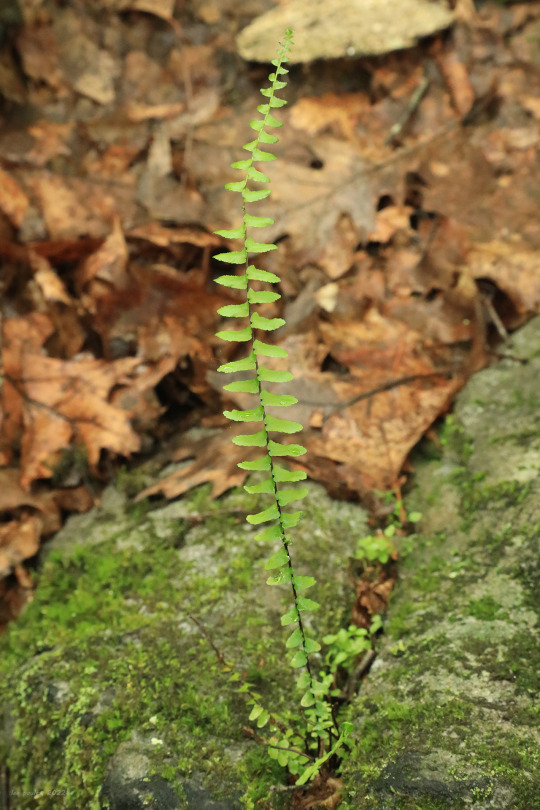
Valley Falls State Park is best known for the dramatic cascades and rapids formed by the Tygart Valley River as it “squeezes” through a narrow gorge on the way to its eventual confluence with the Monongahela River in Fairmont. The park was once the site of a grist mill in the mid-1800s, but the only evidence remaining today is a spillway, a grinding stone, and an abandoned quarry, now overtaken by forest. Falls notwithstanding, I’m ever in awe of the massive slabs of Upper Connoquenessing sandstone piled up on either side of the river - they provide both a testament to earth’s prehistoric past and an amazing riparian zone of rocky pools and sandy embankments where seeds from farther upstream can deposit and take root, providing homes to many uniquely-adapted species.
From top: American water willow (Justicia americana), a showy aquatic perennial that forms large colonies in the shallow riffles of streams; an eastern American toad (Anaxyrus americanus americanus), which was busy croaking and making babies in a rocky pool near the falls; sweet azalea (Rhododendron arborescens), also known as smooth azalea, a rangy, stream-loving shrub whose strongly-scented, white flowers have distinctive red stamens; yellow star grass (Hypoxis hirsuta), an exquisite riparian member of the lily family that clumps on the moist, sandy banks of fast-moving streams; royal fern (Osmunda regalis), a spectacularly beautiful fern that loves the nooks between the boulders at the river’s edge; and ebony spleenwort (Asplenium platyneuron), also known as brownstem spleenwort, an elegant, upright fern with a special fondness for the same rocky nooks.
#appalachia#vandalia#west virginia#tygart valley river#valley falls state park#waterfalls#rapids#riparian#connoquenessing sandstone#geology#spring#wildflowers#flora#amphibian#toad#anaxyrus americanus#american toad#justicia americana#american water willow#rhododendron arborescens#sweet azalea#smooth azalea#hypoxis hirsuta#yellow star grass#osmunda regalis#royal fern#asplenium platyneuron#ebony spleenwort#brownstem spleenwort
172 notes
·
View notes
Text




Riparian Flora
2 notes
·
View notes
Text

artemis "ata" ataliaf
20 ✶ it/they ✶ weirdest creature's insanity arc
https://ataliaf.carrd.co
art blog @artataliaf


#translucid#riparian#girliecore#my art#musix#sublime#idolatry#animels#seity#mimesis#ephemera#marine biology#dragons#friends#inspiration#webcomics#davepeta#shanks#all media should be full titles in romanized original language.#let me know if there's any discrepancy.#bugs#insects#gore#blood
2 notes
·
View notes
Text

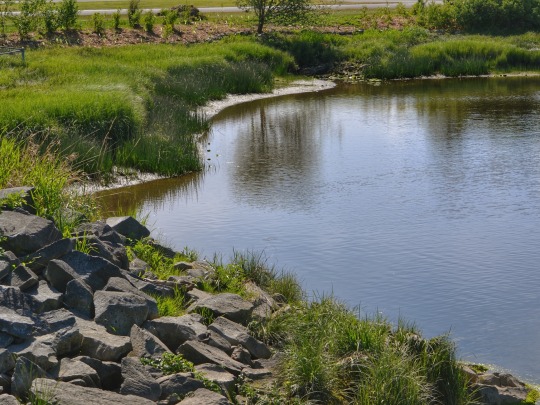
#nature#vancouver island#nature photography#pnw#landscape photography#landscape#green#estuary#riparian
4 notes
·
View notes
Text
My phone doesn't do the best job but here's a minute of the creek and some morning birdsong
#video#birdsong#nature#relaxing#ambience#forest#spring#birds#oak woodlands#riparian#california#my pics#may#may 2022#spring 2022#native wildlife
13 notes
·
View notes
Text
AMPHIBIAN GENDER EUPHORIA



#amphibian#cryptid#Amphibian gender#gender euphoria#cryptid gender#local cryptid#cryptid aesthetic#teichkind#river#riparian#riparian gender
14 notes
·
View notes